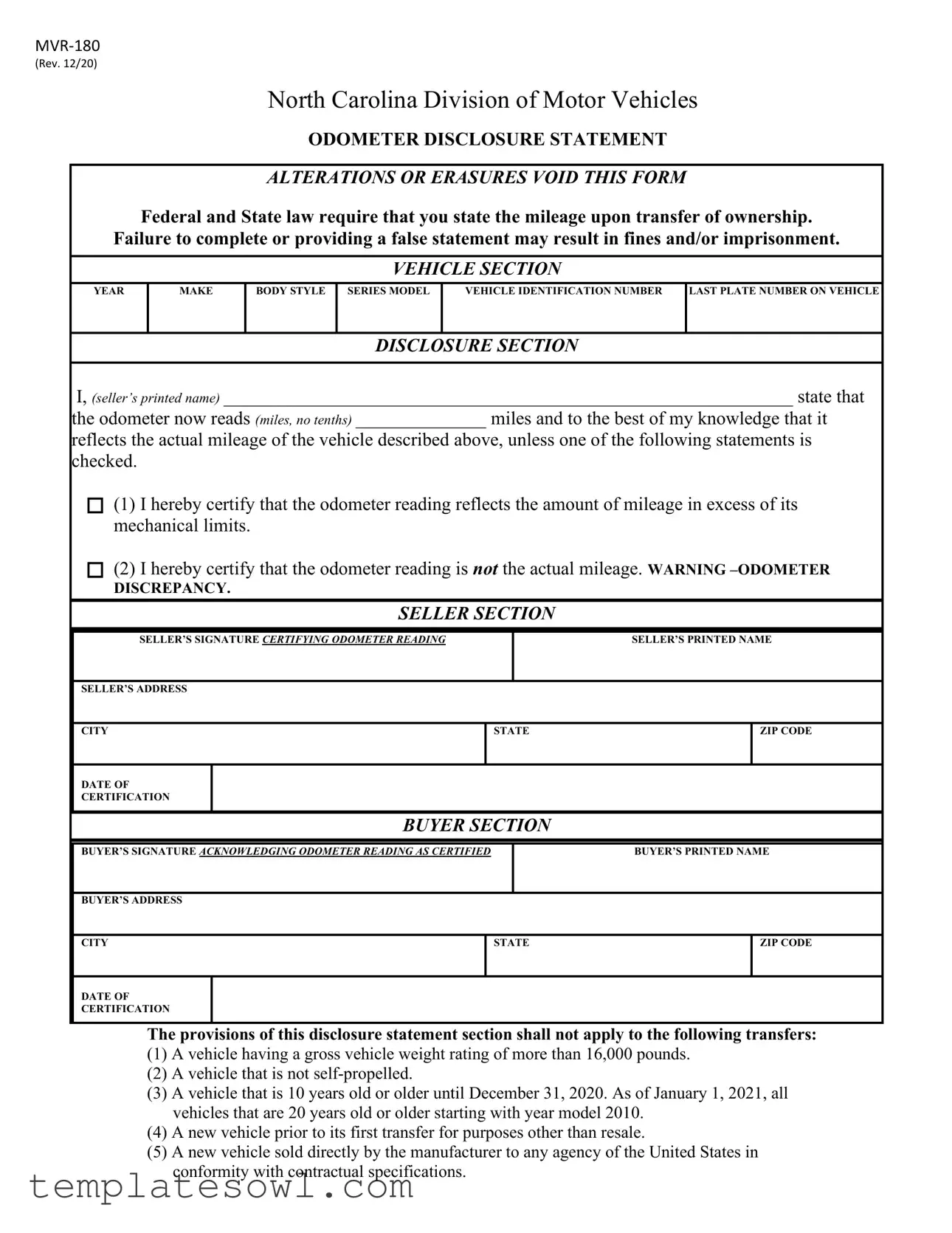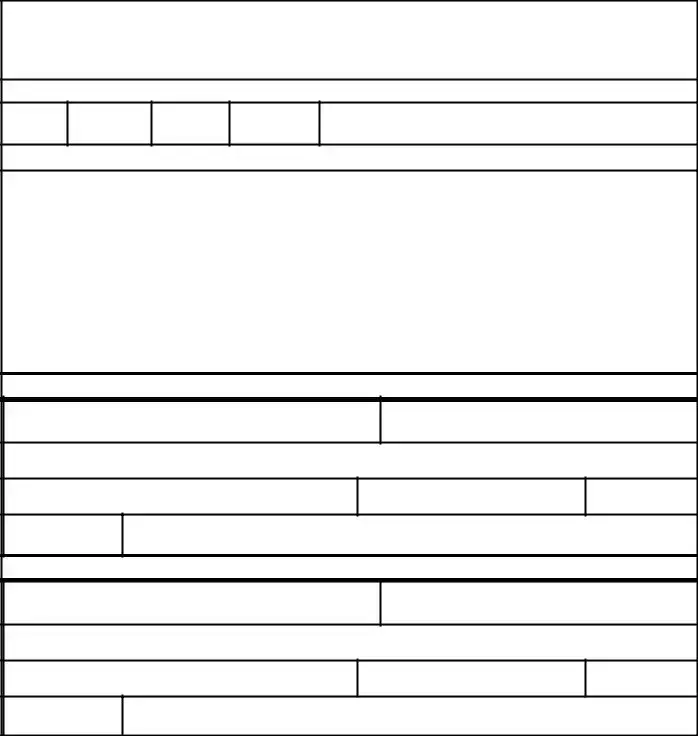MVR-180
(Rev. 12/20)
North Carolina Division of Motor Vehicles
ODOMETER DISCLOSURE STATEMENT
ALTERATIONS OR ERASURES VOID THIS FORM
Federal and State law require that you state the mileage upon transfer of ownership.
Failure to complete or providing a false statement may result in fines and/or imprisonment.
VEHICLE SECTION
VEHICLE IDENTIFICATION NUMBER |
LAST PLATE NUMBER ON VEHICLE |
|
|
DISCLOSURE SECTION
I, (seller’s printed name) _____________________________________________________________ state that
the odometer now reads (miles, no tenths) ______________ miles and to the best of my knowledge that it
reflects the actual mileage of the vehicle described above, unless one of the following statements is checked.
(1) I hereby certify that the odometer reading reflects the amount of mileage in excess of its mechanical limits.
(2) I hereby certify that the odometer reading is not the actual mileage. WARNING –ODOMETER
DISCREPANCY.
SELLER SECTION
SELLER’S SIGNATURE CERTIFYING ODOMETER READING
DATE OF
CERTIFICATION
BUYER SECTION
BUYER’S SIGNATURE ACKNOWLEDGING ODOMETER READING AS CERTIFIED
DATE OF
CERTIFICATION
The provisions of this disclosure statement section shall not apply to the following transfers:
(1)A vehicle having a gross vehicle weight rating of more than 16,000 pounds.
(2)A vehicle that is not self-propelled.
(3)A vehicle that is 10 years old or older until December 31, 2020. As of January 1, 2021, all vehicles that are 20 years old or older starting with year model 2010.
(4)A new vehicle prior to its first transfer for purposes other than resale.
(5)A new vehicle sold directly by the manufacturer to any agency of the United States in conformity with contractual specifications.

